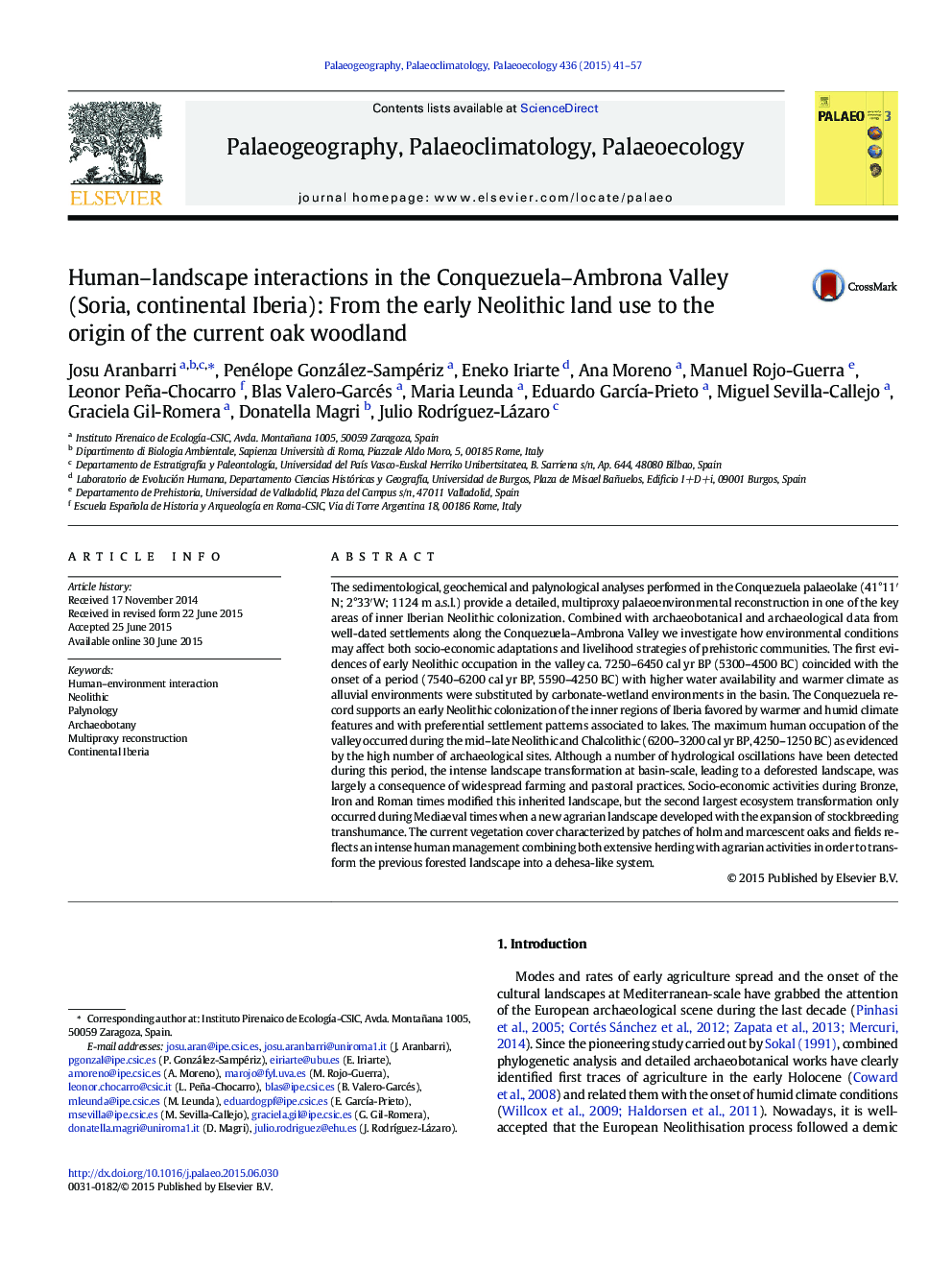| کد مقاله | کد نشریه | سال انتشار | مقاله انگلیسی | نسخه تمام متن |
|---|---|---|---|---|
| 4465894 | 1622154 | 2015 | 17 صفحه PDF | دانلود رایگان |

• New geochemical, sedimentological and palynological record covering the last ca. 13,000 cal yr BP in inland Iberia
• Montane pinewoods persistence during the mid Holocene
• Intense landscape transformation during the mid-late Neolithic and Chalcolithic linked to human activities
The sedimentological, geochemical and palynological analyses performed in the Conquezuela palaeolake (41°11′N; 2°33′W; 1124 m a.s.l.) provide a detailed, multiproxy palaeoenvironmental reconstruction in one of the key areas of inner Iberian Neolithic colonization. Combined with archaeobotanical and archaeological data from well-dated settlements along the Conquezuela–Ambrona Valley we investigate how environmental conditions may affect both socio-economic adaptations and livelihood strategies of prehistoric communities. The first evidences of early Neolithic occupation in the valley ca. 7250–6450 cal yr BP (5300–4500 BC) coincided with the onset of a period (7540–6200 cal yr BP, 5590–4250 BC) with higher water availability and warmer climate as alluvial environments were substituted by carbonate-wetland environments in the basin. The Conquezuela record supports an early Neolithic colonization of the inner regions of Iberia favored by warmer and humid climate features and with preferential settlement patterns associated to lakes. The maximum human occupation of the valley occurred during the mid–late Neolithic and Chalcolithic (6200–3200 cal yr BP, 4250–1250 BC) as evidenced by the high number of archaeological sites. Although a number of hydrological oscillations have been detected during this period, the intense landscape transformation at basin-scale, leading to a deforested landscape, was largely a consequence of widespread farming and pastoral practices. Socio-economic activities during Bronze, Iron and Roman times modified this inherited landscape, but the second largest ecosystem transformation only occurred during Mediaeval times when a new agrarian landscape developed with the expansion of stockbreeding transhumance. The current vegetation cover characterized by patches of holm and marcescent oaks and fields reflects an intense human management combining both extensive herding with agrarian activities in order to transform the previous forested landscape into a dehesa-like system.
Journal: Palaeogeography, Palaeoclimatology, Palaeoecology - Volume 436, 15 October 2015, Pages 41–57